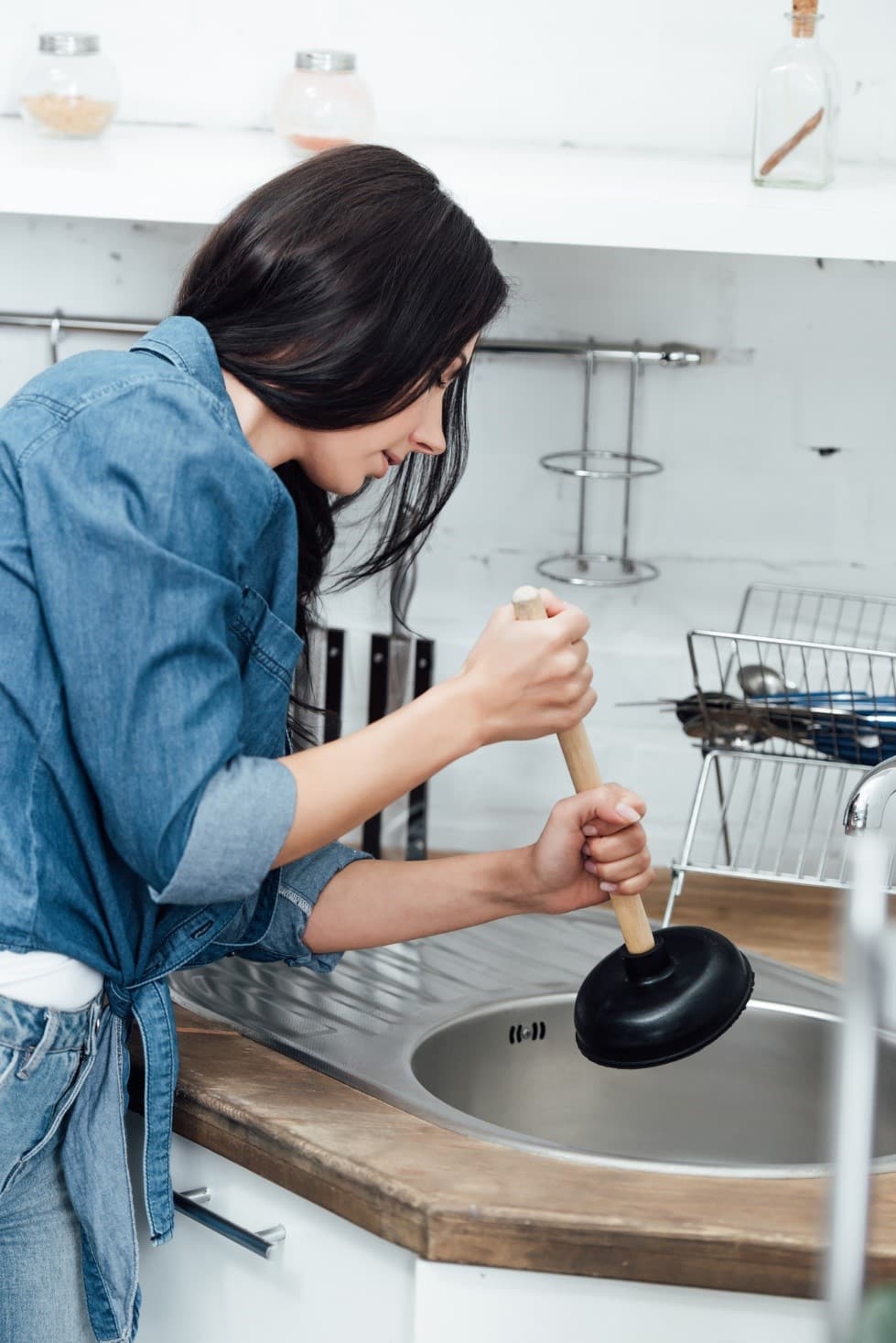The 3 Types of Plungers
The plunger is your first line of defense against plumbing disasters. If you don’t know your plunger, though, you might not be clearing clogs as effectively as you could be. Some plungers work well on sink clogs, and some are specifically made for toilets. Here is everything you need to know about this essential tool for clearing clogged drains.
Deciphering Different Types of Plungers
1. Cup Plunger
This first iteration of a plunger is what you mentally picture when you use this device. The cup plunger gets its namesake from the rubber cup at its end, which creates a vacuum over a drain to unclog your pipes. While it is the most common type of plunger you’ll find in a home, it is not always the best tool for the job.
Cup plungers require a flat surface to create a seal over the drain. The vacuum formed then creates positive pressure (when pushing down) and negative pressure (when pulling up), which work to clear clogged drains. While they are useful for unclogging sinks and tubs, cup plungers cannot create this vacuum in a toilet bowl, making them the wrong choice for the job.
2. Accordion Plunger
To solve the issue that the cup plunger poses, you can turn to an accordion plunger. Made of hard plastic, this device narrows into a smaller cup that can fit  over the drain at the bottom of a toilet bowl. With a ribbed accordion-shaped feature just above, you can create considerable pressure that dislodges even the toughest clogged drains.
over the drain at the bottom of a toilet bowl. With a ribbed accordion-shaped feature just above, you can create considerable pressure that dislodges even the toughest clogged drains.
While accordion plungers are effective, they’re also slightly tricky for non-pros to use. The rigid plastic makes it tough to get on the drain initially. Even when properly positioned in the drain, the pressure generated by hard plastic can damage your toilet bowl, marking it up or scratching it. If you think your plumbing issue will need accordion-strength plunging, leave the clogged drain to the pros.
3. Flange Plunger
The most user-friendly of the three types of plungers stands somewhere between the previous two options. The flange plunger looks a bit like the cup plunger, but it tends to have a more extended handle, and the cup tends to be black rather than red. The most crucial difference in design, however, is that the flange plunger has a soft rubber flap–the eponymous flange–that folds out from inside the cup.
This piece fits over the drain of the toilet bowl to create that suction an accordion plunger can while having the more toilet bowl-friendly material of the cup plunger. It can also easily tuck inside the cup to make, essentially, a cup plunger. You can then use the flange plunger on sinks, toilets, or whatever else you need unclogged. Keep in mind, though, that you don’t use the same plunger for your toilet as you would your kitchen sink to avoid any hygiene and cross-contamination concerns.
Paul Bunyan always makes sure he has the right tools for every job he takes on, and his buddies at Paul Bunyan Plumbing & Drains are no different. We will provide expert service that can clear even the toughest clogged drains in your home. For more information and to schedule an appointment, give us a call today at 612-340-1444.


